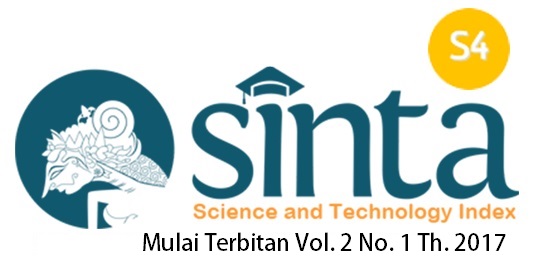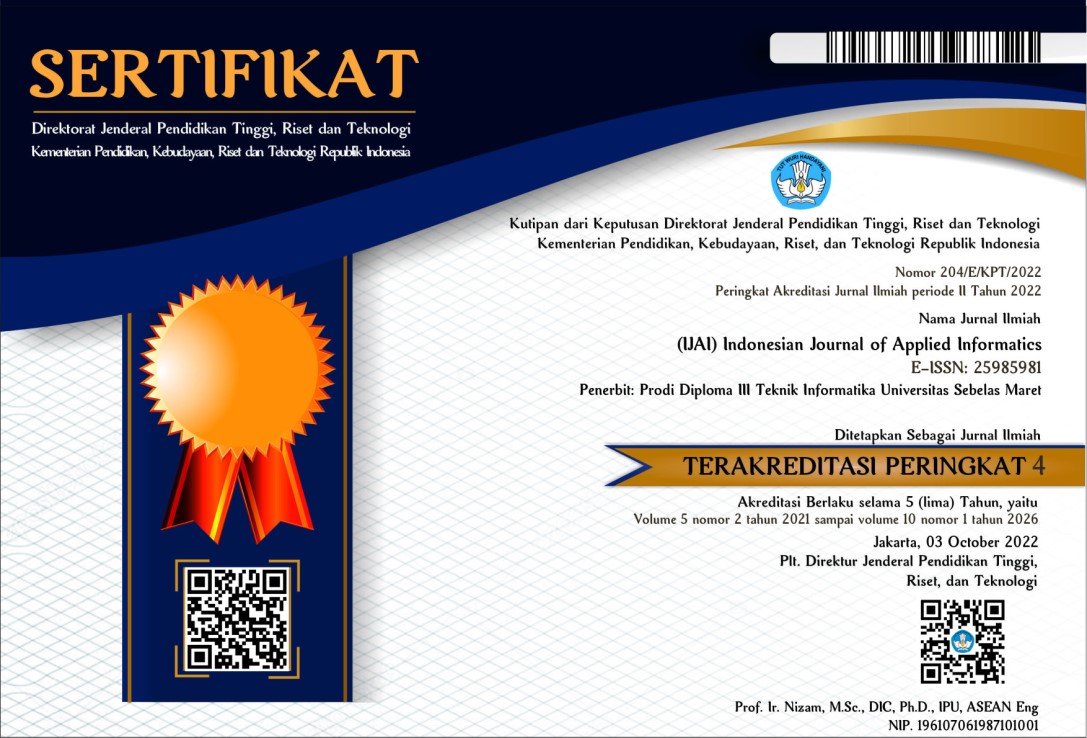Designing a Mobile Application for Financial Management using Mudarabah and Murabahah Contracts based on Clustering Method
Abstract
Penelitian ini berfokus pada pengelolaan keuangan perusahaan yang menggunakan akad mudharabah dan murabahah yang memerlukan pengelolaan yang baik karena informasi asimetris yang menyebabkan masalah adverse selection. Analisis klaster dapat mengkategorikan perusahaan berdasarkan penyajian data keuangan mereka, dan aplikasi seluler dapat membuat manajemen keuangan lebih mudah diakses dan lebih cepat. Penelitian ini bertujuan untuk merancang aplikasi mobile akad mudarabah dan murabahah berdasarkan metode clustering untuk menjawab tantangan pengelolaan keuangan. Proses perancangan aplikasi mobile akan mengutamakan kebutuhan pengguna dengan menggunakan pendekatan prototyping. Hasil pengujian fungsionalitas berhasil melakukan proses registrasi, aktivasi keanggotaan, dan penyimpanan data member. Selain itu, sistem dapat menyimpan dan memverifikasi data penyerahan Mudarabah yang dimasukkan melalui formulir penyerahan Mudarabah.
This research focuses on the financial management of companies that use mudarabah and murabahah contracts which require good management because of asymmetric information, which causes adverse selection problems. Cluster analysis can categorize companies based on the presentation of their financial data, and mobile applications can make financial management more accessible and faster. This study aims to design a mobile application for mudarabah and murabahah contracts based on the clustering method to address financial management challenges. The mobile application design process will prioritize user needs using a prototyping approach. The functionality test results successfully carry out the registration process, activate membership, and save member data. In addition, the system can store and verify Mudarabah submission data entered through the Mudarabah submission form.
Keywords
Full Text:
PDFReferences
[1] A. Tahiri Jouti, “Islamic finance: financial inclusion or migration?,” ISRA Int. J. Islam. Finance, vol. 10, no. 2, pp. 277–288, Dec. 2018, doi: 10.1108/IJIF-07-2018-0074.
[2] D. F. Khmous and M. Besim, “Impact of Islamic banking share on financial inclusion: evidence from MENA,” Int. J. Islam. Middle East. Finance Manag., vol. 13, no. 4, pp. 655–673, Jan. 2020, doi: 10.1108/IMEFM-07-2019-0279.
[3] M. Nidaussalam, “Mudaraba as a Model of Islamic Finance,” Shirkah J. Econ. Bus., vol. 1, no. 1, pp. 73–92, 2016, doi: 10.22515/shirkah.v1i1.11.
[4] M. Rahman, “Asian Journal of Research in Banking and Finance,” Asian J. Res. Bank. Finance, vol. 8, no. 6, pp. 33–46, Jul. 2018, doi: 10.5958/2249-7323.2018.00042.1.
[5] N. M. Sapuan, “An Evolution of Mudarabah Contract: A Viewpoint From Classical and Contemporary Islamic Scholars,” Procedia Econ. Finance, vol. 35, pp. 349–358, 2016, doi: 10.1016/S2212-5671(16)00043-5.
[6] M. Tiessen, “The Appetites of App-Based Finance: Affective and speculative futures,” Cult. Stud., vol. 29, no. 5–6, pp. 869–886, Sep. 2015, doi: 10.1080/09502386.2015.1017148.
[7] M. Sajic, D. Bundalo, Z. Bundalo, and D. Pasalic, “Using digital and mobile technologies for increasing efficiency of financial institutions,” in 2017 25th Telecommunication Forum (TELFOR), Belgrade: IEEE, Nov. 2017, pp. 1–4. doi: 10.1109/TELFOR.2017.8249405.
[8] A. Fodor, R. D. Jorgensen, and J. D. Stowe, “Financial clusters, industry groups, and stock return correlations,” J. Financ. Res., vol. 44, no. 1, pp. 121–144, Apr. 2021, doi: 10.1111/jfir.12236.
[9] R. S. Pressman, Software engineering: a practitioner’s approach, 5th ed. in McGraw-Hill series in computer science. Boston, Mass: McGraw Hill, 2000.
[10] J. Rumbaugh, I. Jacobson, and G. Booch, The unified modeling language reference manual. in The Addison-Wesley object technology series. Reading, Mass: Addison-Wesley, 1999.
[11] G. Aagesen and J. Krogstie, “BPMN 2.0 for Modeling Business Processes,” in Handbook on Business Process Management 1, J. vom Brocke and M. Rosemann, Eds., Berlin, Heidelberg: Springer Berlin Heidelberg, 2015, pp. 219–250. doi: 10.1007/978-3-642-45100-3_10.
Refbacks
- There are currently no refbacks.






